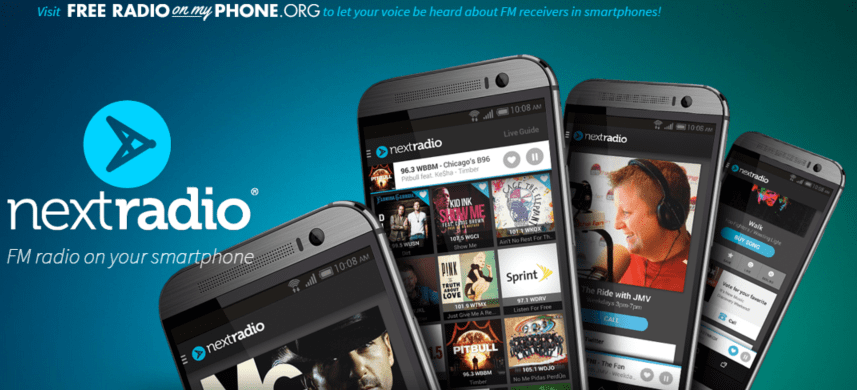WASHINGTON – New software now allows millions of Americans to unlock the free FM radio receivers built into almost every smartphone sold in the US.
Called NextRadio, the free app unlocks the FM receiver, enabling the phone to receive all local FM radio stations for free without using the cell phone network, so there are no data charges or other costs. Just remember to recharge your battery.
NextRadio only works on Android cell phones, and not yet on all Android phones. Originally developed with Sprint, NextRadio now runs on all major US cell phone networks.

The new app does more than just unlock the FM receiver chip: it also launches TagStation, an interactive display showing all of the programming on local stations it can receive, including information on performing artists’ upcoming appearances in that local area. Oh, and you buy the music you are hearing with a tap on the screen.
The new free download was demonstrated and discussed at a CCLP and Sunnylands forum here this week on improving cell phones as platforms for public safety and emergency preparedness, by Jeff Smulyan, chairman of Emmis Communications, a major US broadcast group. Smulyan said there would be a massive advertising campaign starting in February to publicize the new download.
Emmis, along with NPR and other public broadcasters have long favored unlocking the FM receivers, but Apple and most US mobile phone carriers have refused – and have declined to explain why. (For example, see this Boston Globe article).
By shifting use of mobile phones to a combination of cell network plus free over-the-air radio, mobile phone carriers may lose revenue as customers reduce use of their data plans. But one company, Sprint, decided to break with other US carriers and partner with Emmis to develop the new download; in return Sprint gets a share of revenues broadcasters receive from mobile customers.
In tornadoes, hurricanes, floods and other emergencies, the ability to receive over-the-air radio can save lives, which is why it was a topic for the CCLP and Sunnylands forum on public safety and emergency preparedness.
“If your radio is now in your cell phone, that is just one less device that you have to have extra,” said W. Craig Fugate, head of the Federal Emergency Management Agency (FEMA), in a video ] last year. “It’s important to make certain you can get broadcast in an emergency.”
Fugate noted that in many emergencies, the cell phone system stops functioning because it is overloaded, and broadcast radio may be the only way people can receive life-saving information.
All of this of course is good news for commercial and public broadcasters in the US, who expect increased listening to their stations. Seventeen percent of all Americans over the age of 12 said they would listen “a lot more” to local radio stations after they download the NextRadio app, according to a recent survey.
In much of the world, especially in underdeveloped countries, people listen to radio on their cell phones for free using the same receiver chips that until now have been turned off in US phones.
In Cambodian cities, more people now listen to radio on their phones than on a radio, according to Gallup (slide 16 of this report). In Afghanistan, again according to Gallup, 17% of the population listens to radio on a cell phone (slide 28).
In much of the world, people can also watch television on their mobile phones; for example, see this Broadcasting Board of Governors article.
Indeed, when I discussed this subject at forums in Asia earlier this month, experts were surprised to learn that Americans could not use cell phones to receive broadcast radio – or to receive broadcast emergency information.